Microsoft Surface Precision Mouse review: The perfect Surface device companion
The Surface Precision mouse is Microsoft's take on the pro-level features found in the popular Logitech MX2S peripheral for PCs. How does the $99 accessory stack up? Surprisingly well.
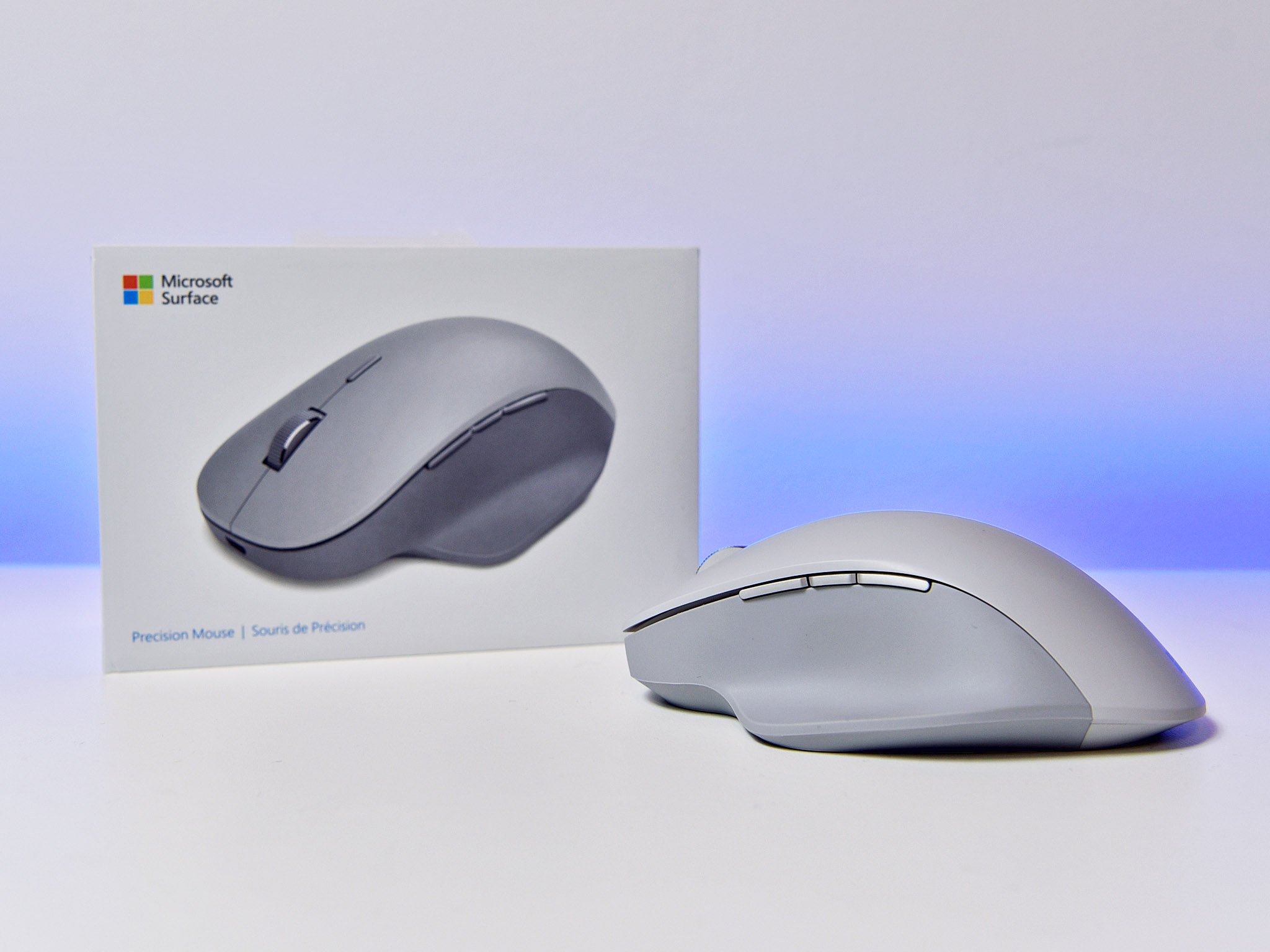
The Microsoft Surface Precision mouse went on sale earlier this fall for $99 at the Microsoft Store. Co-announced with the new Surface Book 2 series the Surface Precision mouse brings desktop and professional-level features to the growing Surface mouse line.
I've been using the Surface Precision for the last few weeks and don't have anything negative to say about it. The features are useful, the ergonomics are fantastic, and if you are looking for a high-end, non-gaming mouse for work the Surface Precision mouse should be on your shortlist.
Surface Precision features
The Surface Precision mouse brings many semi-unique features to the table including support for running on three PCs at the same time. Its focus, however, is on the build quality, ergonomics, and overall usage.
| Features | Surface Precision Mouse |
|---|---|
| Design | Ergonomic desktop |
| Materials | Machined aluminumMolded TPE side grip and thumb rest |
| Buttons | Three customizable |
| Connectivity | Bluetooth 4.0/4.1/4.2 Low EnergyUSB 2.1 |
| Range | At least 16 feet (5 meters) in office environment |
| Power supply | Rechargeable (USB) |
| Battery | Three months |
| Dimensions | 122.6 mm x 77.6 mm x 43.3 mm (L x W x D) |
| Weight | 135 g |
| Compatibility | Windows 10, Windows 8.1, Windows 7 (USB only)mac OS X 10.12+ (USB mode only) |
Eschewing 2.4GHz connection and requiring a dongle, the Surface Precision mouse uses Bluetooth Low Energy and is compatible with all modern Windows PC and even Apple Mac OS X (but wired).
For those who disapprove of wireless connectivity besides used to recharge the non-replaceable battery, the micro USB port also serves as a wired-connection overriding wireless. Surprisingly, not many mice offer a true USB mode, so it's great to see here as an option.
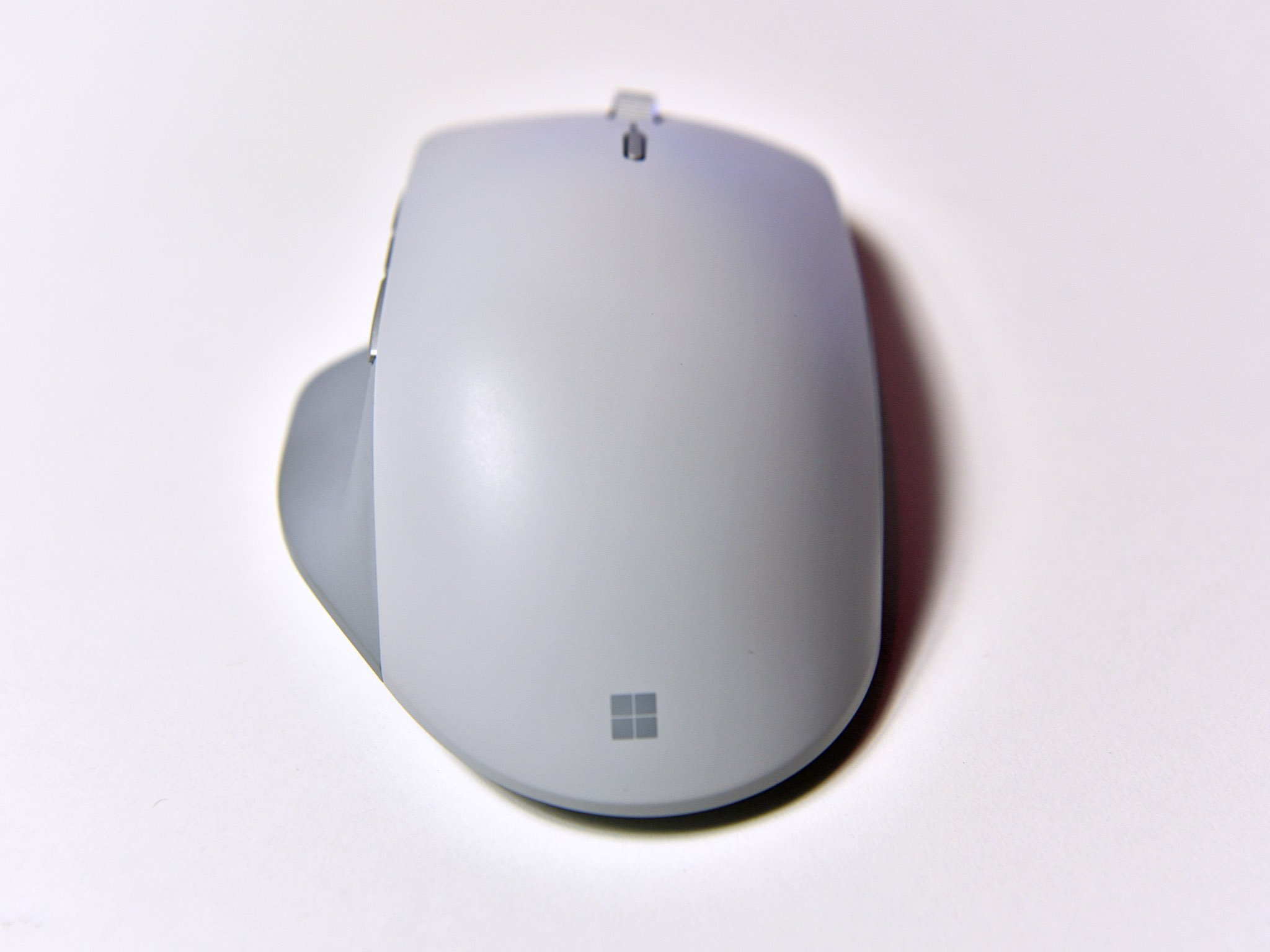
There are three buttons on the side – all of which are programmable – and a metal scroll wheel that offers detent or smooth scrolling options by clicking a button behind the wheel.
There is also a toggle switch on the bottom for three PCs. Users can switch between 1,2, or 3 on the bottom for each paired PC on the fly.
Get the Windows Central Newsletter
All the latest news, reviews, and guides for Windows and Xbox diehards.
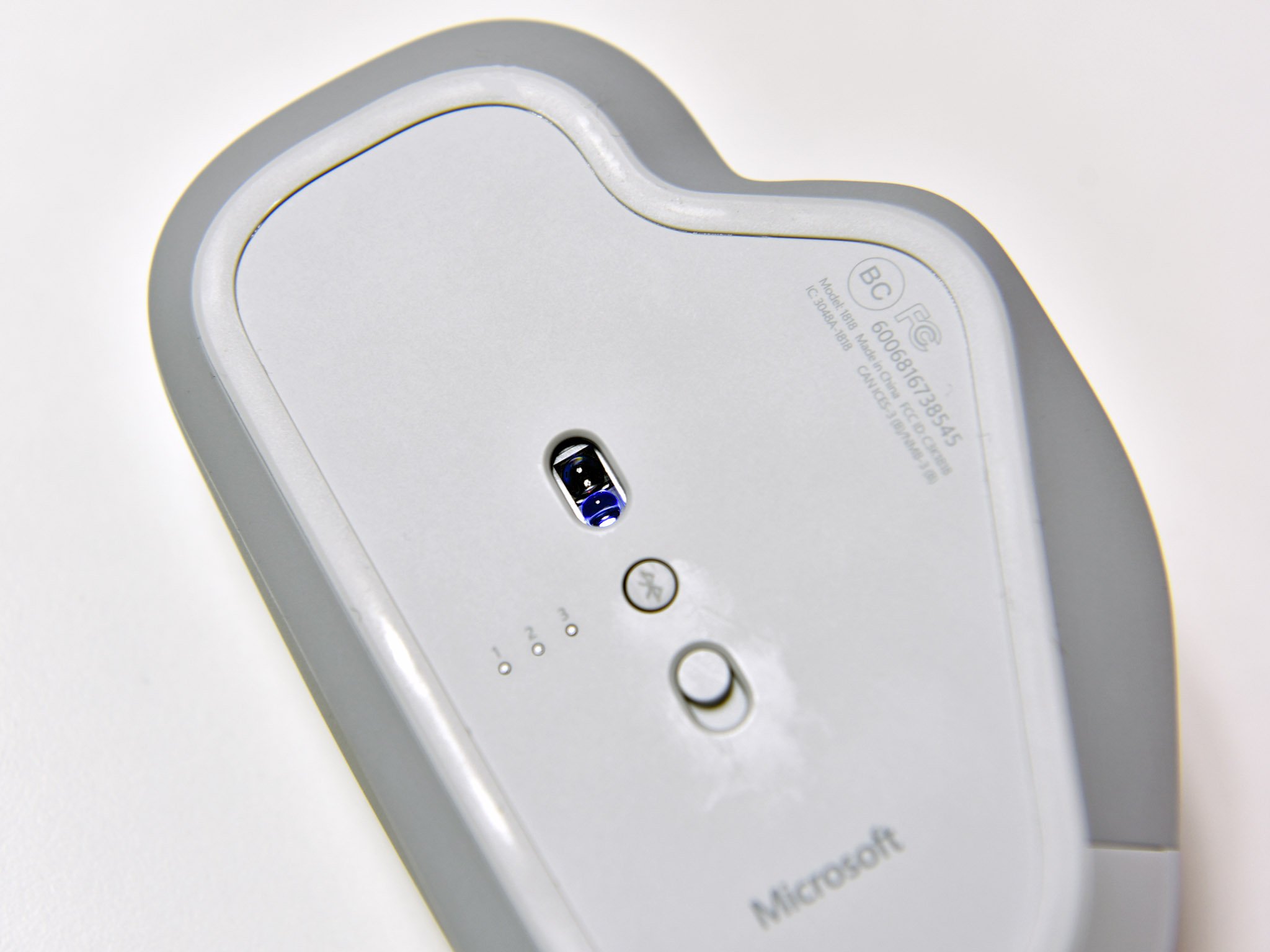
The mouse supports 400 to 3,200 dot-per-inch (DPI), which is user configurable in the accompanying Microsoft Mouse and Keyboard Center software.
Surface Precision design
Made from plastic and machined aluminum and weighing 135 grams, the Surface Precision mouse has an ergonomic rounded back and thumb rest. That rest prevents your thumb from dragging on a mouse mat and makes a big difference for overall comfort.
The scroll wheel is grippy with little wiggle or rattle. The detent scrolling (a.k.a. "clicky") feels nearly as perfect as using a Precision touchpad tuned by Microsoft. For those who prefer free scroll that option is here and can be manually enabled on the fly.
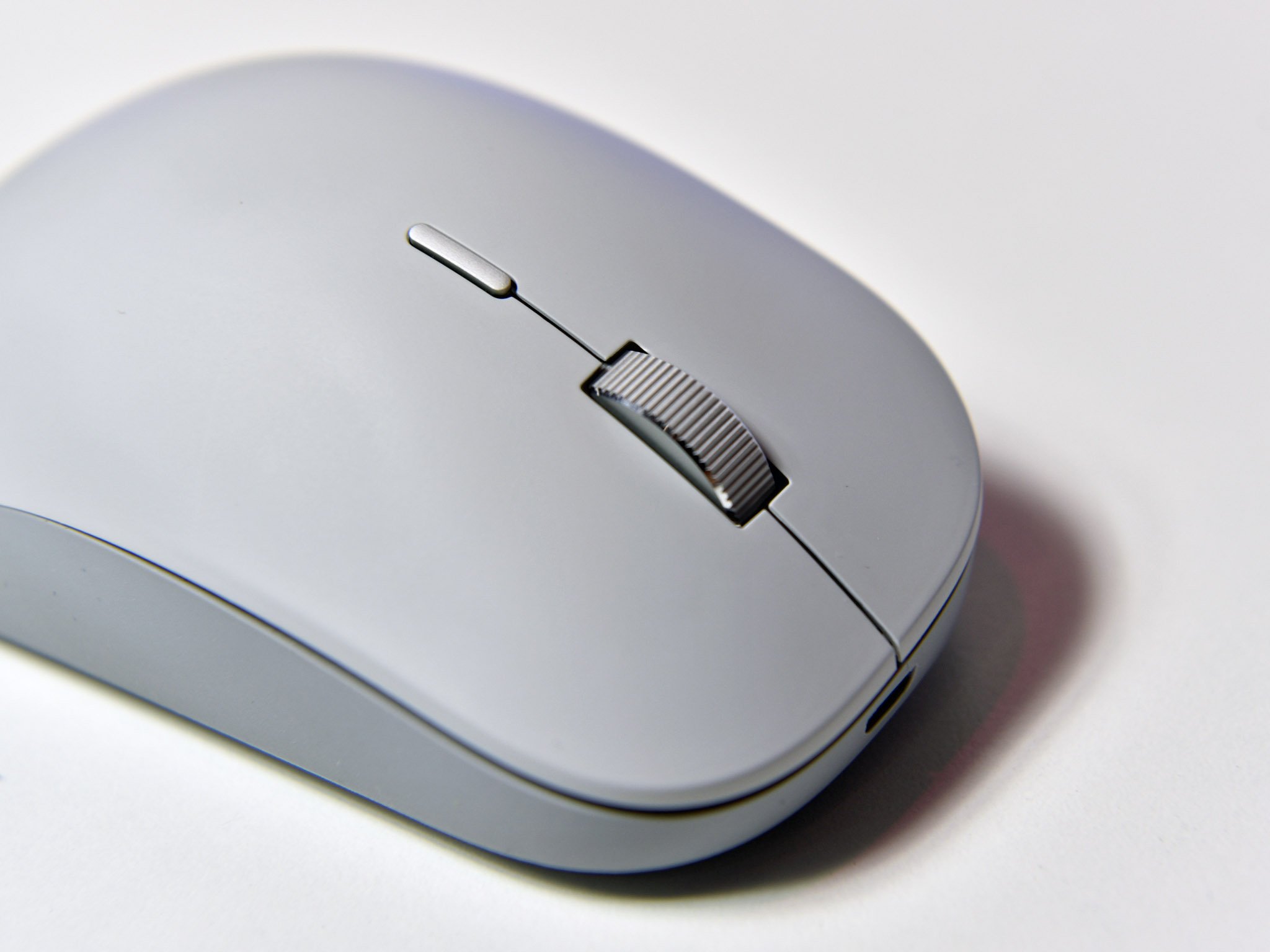
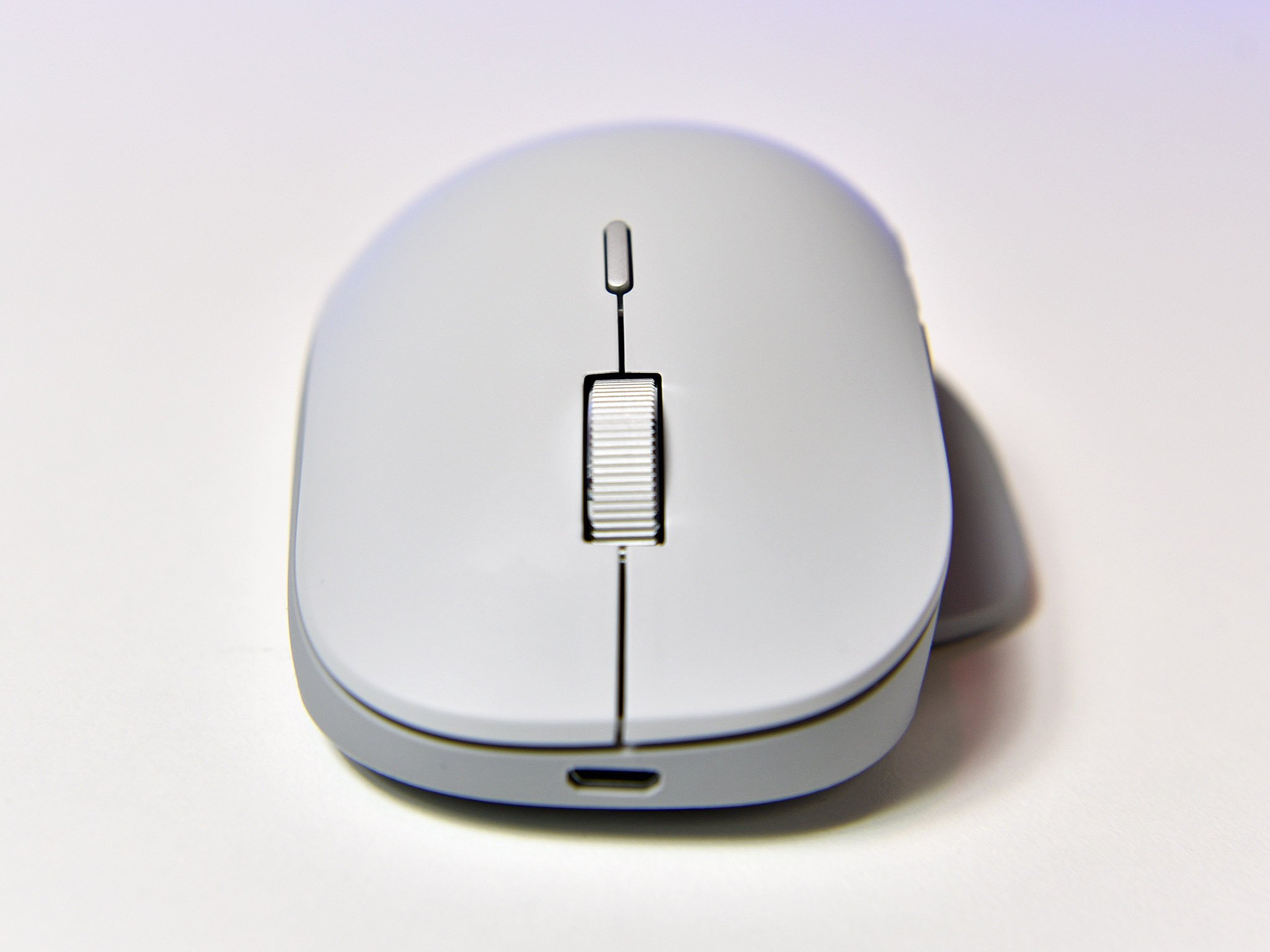
My only concern with the Surface Precision mouse is long term that gray Surface color may pick up – or at least show – dirt more easily than traditional dark or black mice. Of course, being mostly plastic/rubber (Thermoplastic Elastomer or TPE) it should be readily cleanable, but time will tell if it stains or not.
Surface Precision software
While users do not need to use the Microsoft Mouse and Keyboard Center software Windows users are strongly encouraged (and even prompted) to install it.
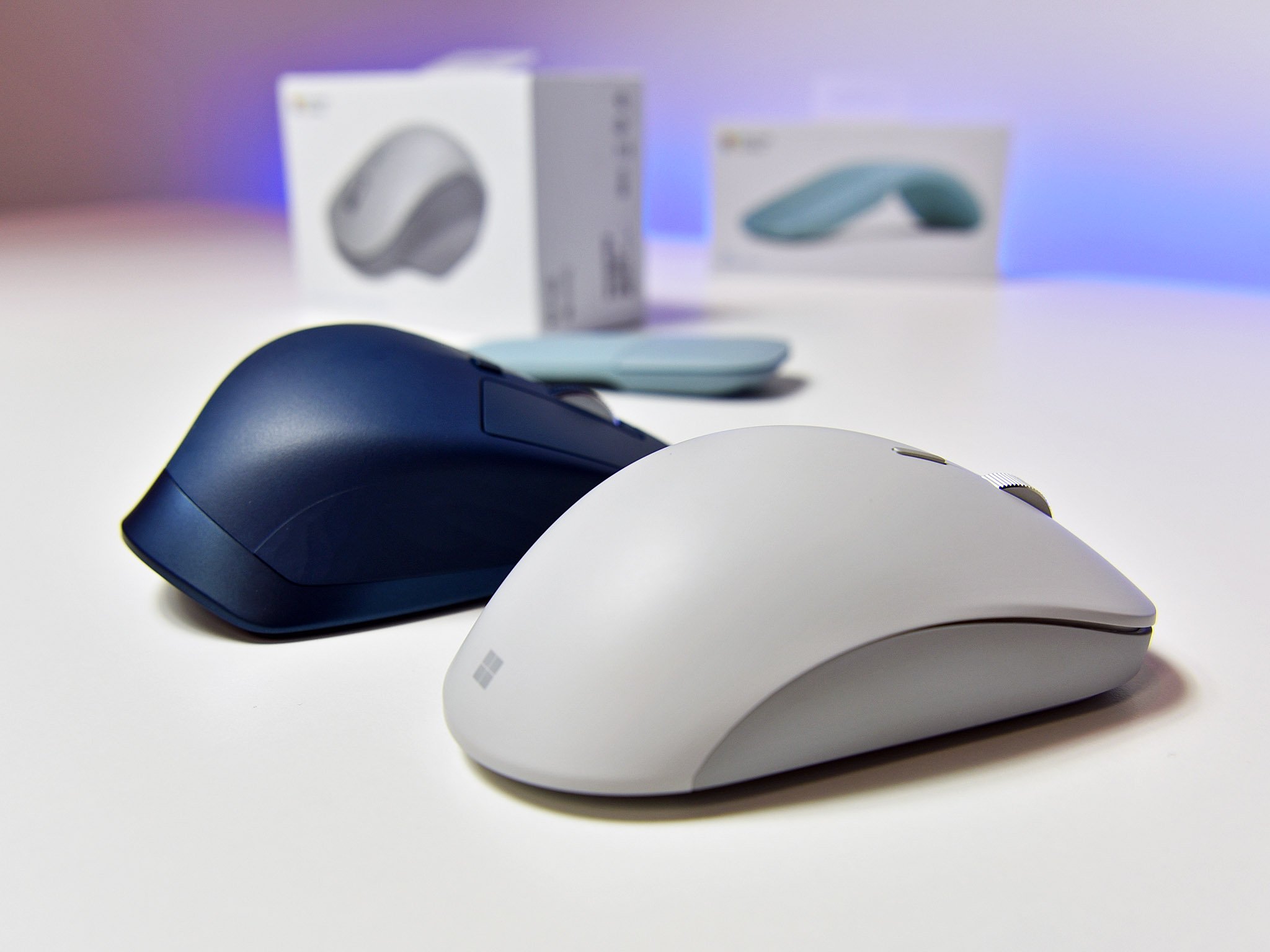
Like all high-end mice with configurations, the Mouse and Keyboard Center lets users configure the buttons, set DPI, add macros, check battery life and more. It's excellent software that is also quite stable.
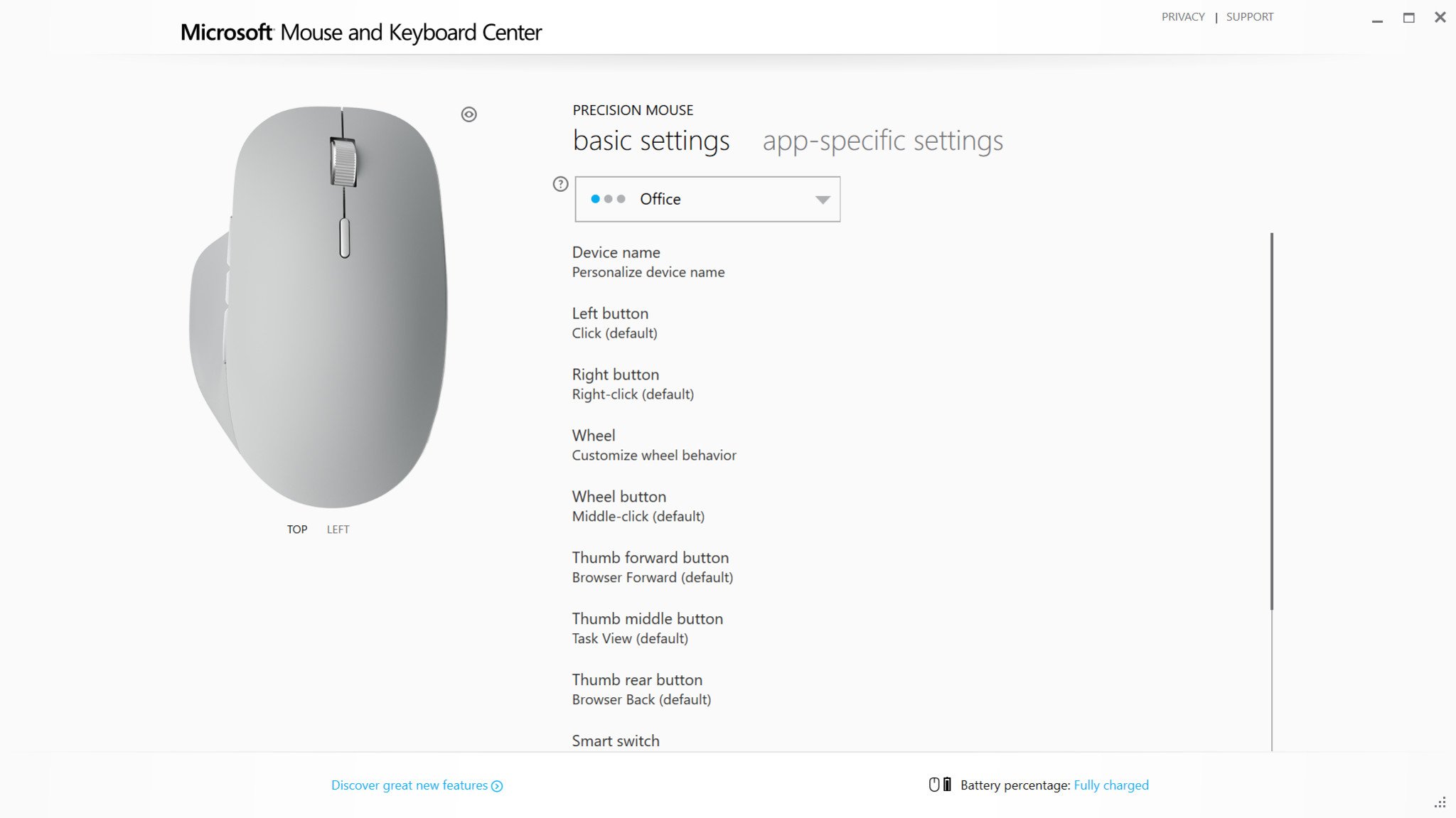
That software also lets you use the Smart Switch feature which allows users run the mouse on three PCs at the same time. The process is simple: pair the Surface Precision mouse to three different PCs. Each PC also needs to be running the Mouse and Keyboard Center software. On any PC, enable the Smart Switch feature.
Once running, when you bring the cursor to the edge of the screen it will pause for second and jump to the other PC seamlessly. Users can configure the ordering of the PCs too and change them at any time. If you don't want to include a PC, you can just toggle it off. There is also an optional notification that can pop up to let you know the mouse as jumped to another PC.
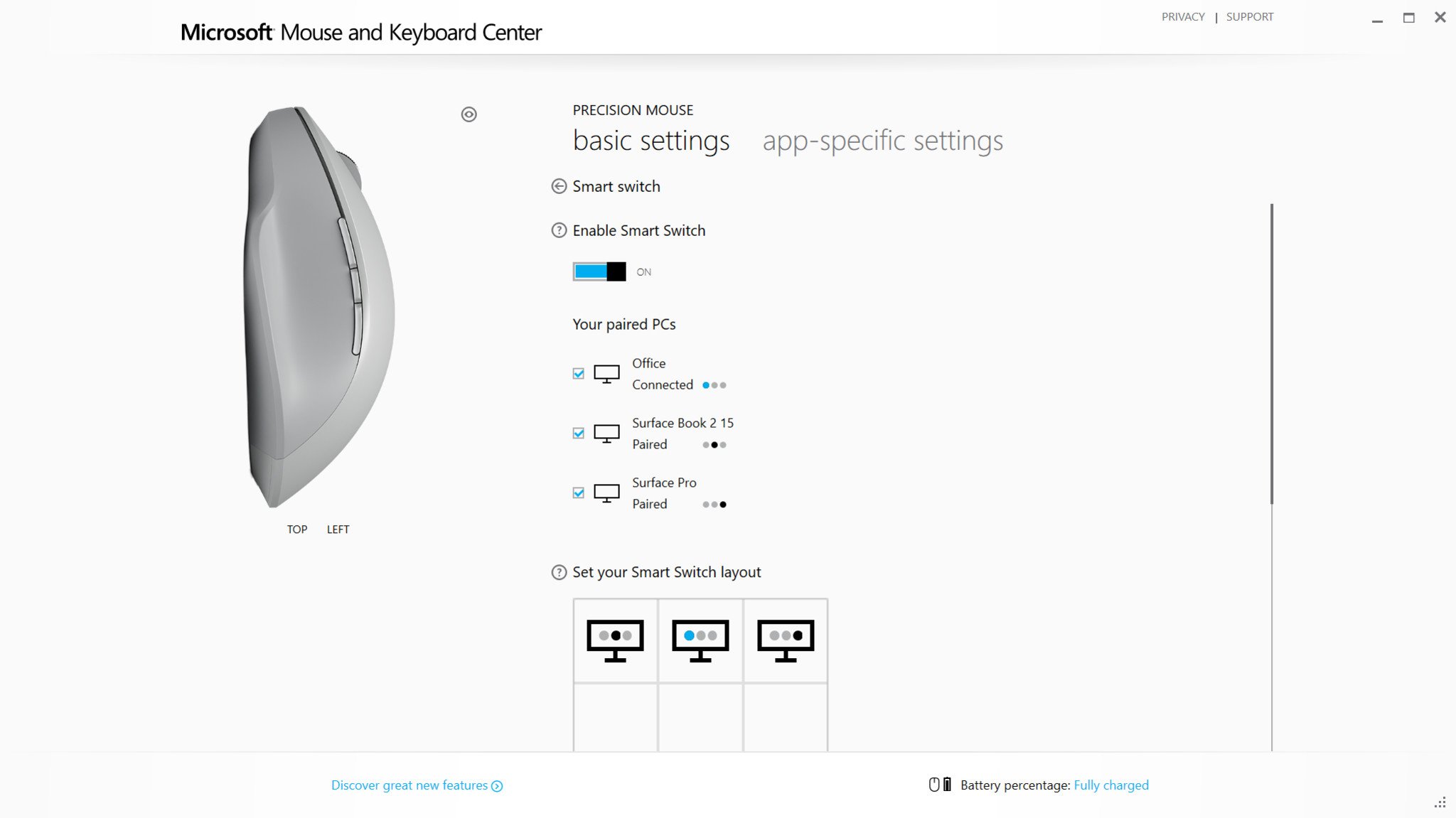
While not everyone will use Smart Switch for those power users who work on a desktop PC and a laptop, it's a killer feature. I had no problems using it.
Additional options like program-specific settings, assigning macros to those programmable keys, or even running keyboard shorts are all possible, but reserved for those who need particular functionality.
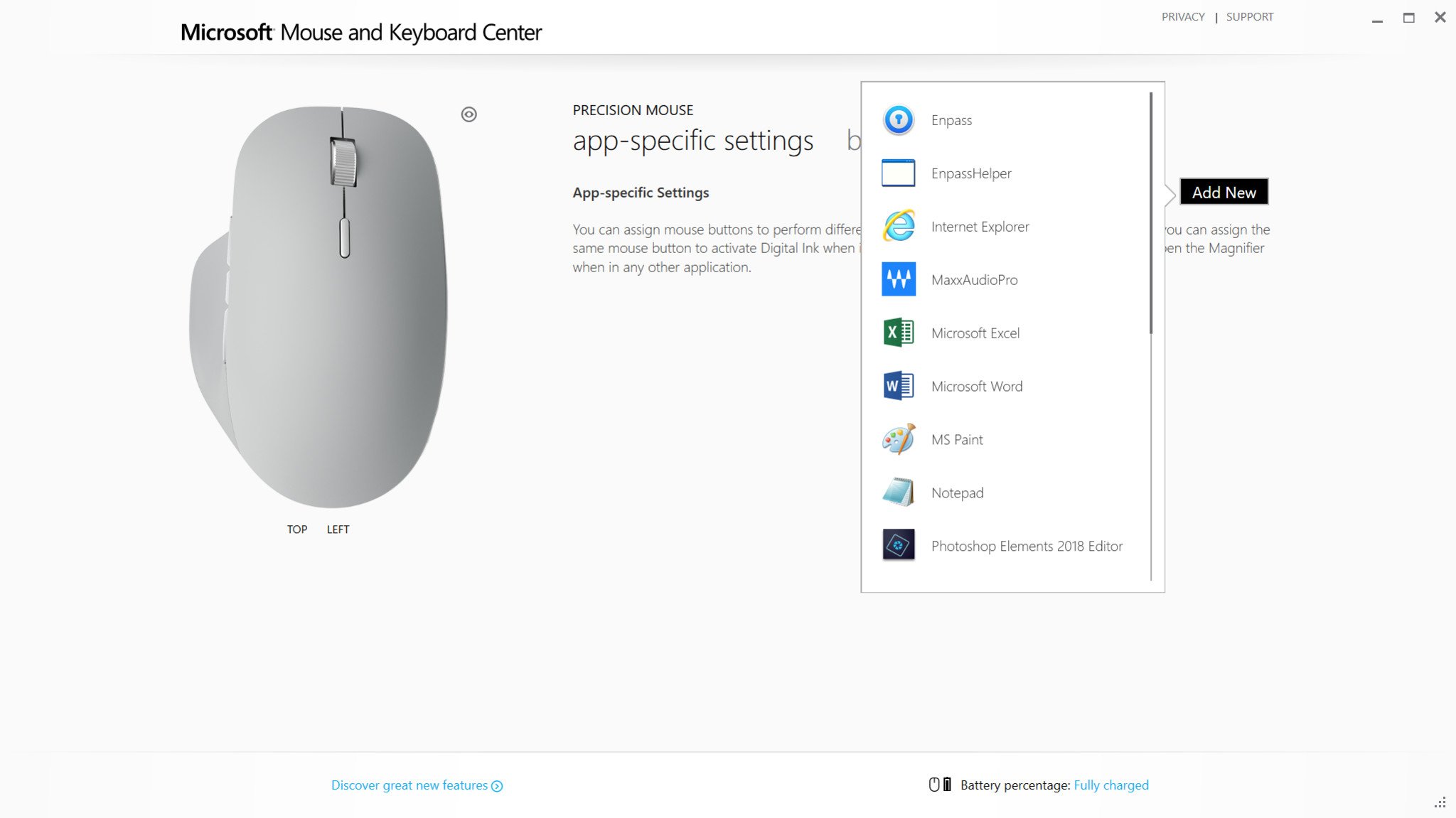
Finally, it should be noted that for those using the Surface Laptop and running Windows 10 S, they will not be able to install the Mouse and Keyboard Center software as it is still a Win32 app that needs to be downloaded. Hopefully, Microsoft will be able to port it to the Microsoft Store using its desktop bridge in the future to fix this oversight.
Surface Precision performance and conclusion
The Surface Precision mouse feels great to use. The ergonomic design is bang on, and the scrolling and clicking feel great. Indeed, the clicking is on the quiet side, which is a good thing for those who hate sharp, high-pitched clicks from constant usage in quiet environments.
Relying on Bluetooth is not without its risks, however. Depending on your device, drivers, and any possible interference from nearby devices, you could experience the usual Bluetooth oddities. Many companies avoid this by using a dongle with a 2.4GHz channel for the radio. While more reliable, that technology does require a USB Type-A dongle, which not only takes up a valuable port but is quickly lost. Moreover, it does not help when using across three devices at the same time.
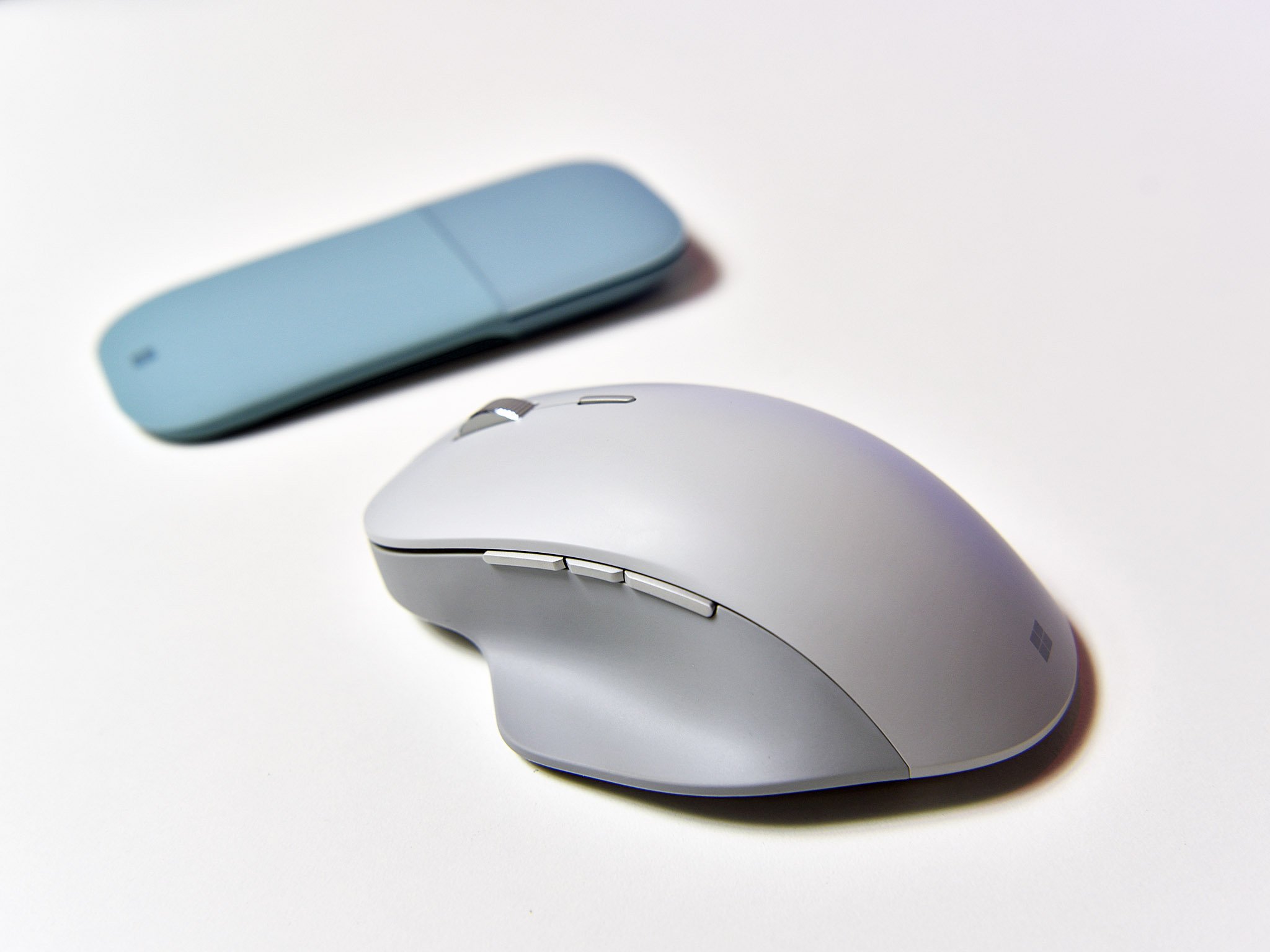
Being able to plug in for USB wired-mode is a great feature, however. While you do need to plug in to recharge the battery should last around two to three months. I have seen some complain that Microsoft should have used a USB Type C plug, but that component is larger than the micro USB, costs more, and it's not clear what real advantage it would have for everyday usage.
I found the DPI settings OK as well even on a large 27-inch 4K display where high precision movement is needed.
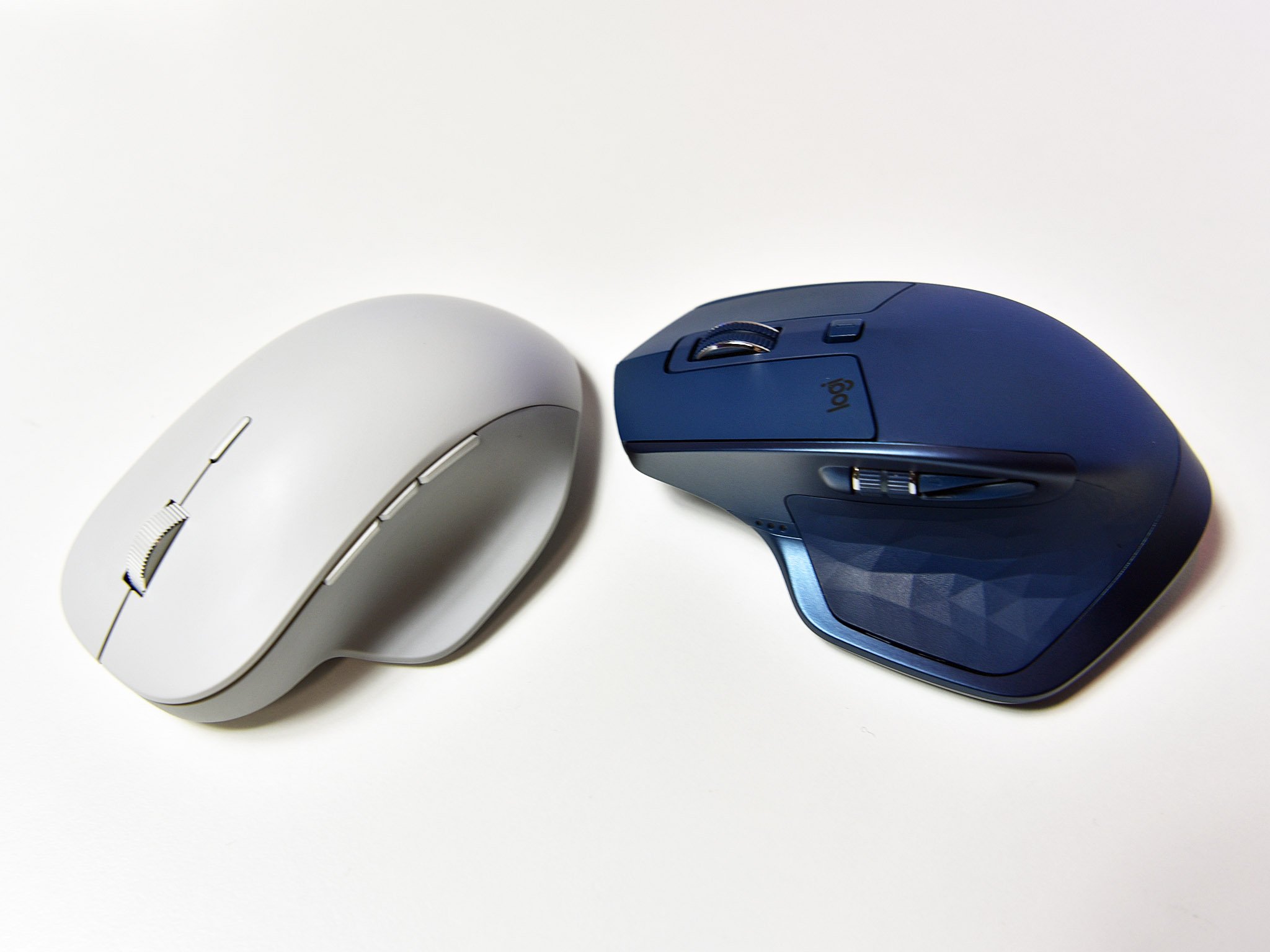
Compared to the Logitech MX Master 2S, which I reviewed recently, there is not a whole lot of difference. Both run around $99, are ergonomic, run over Bluetooth, have similar DPI settings, and excellent software. The Logitech does have an optional 2.4GHz dongle, but it cannot run in USB wired mode. I also found the Logitech louder for clicking and not quite as comfortable compared to the Surface Precision, but those are personal preferences. The Logitech does have a favorite thumb scroll wheel, but in my usage, I never took advantage of it – your experience may vary.
Pros:
- Very good design and comfortable to use.
- Excellent buttons and scroll wheel behavior.
- Wireless (Bluetooth) or wired (USB) options.
- Long battery life.
- Robust software that lets you run on three PCs at once.
Cons:
- Reliance on Bluetooth can be problematic for some.
- Not overtly better than Logitech MX Master 2S.
Overall, I can recommend the Microsoft Surface Precision Mouse. It looks great, runs well, and it brings some advantageous features to the table for those who need advanced and customizable features. While not a travel mouse per se it is a bit flatter than the Logitech MX Master 2S making it not a bad choice for slipping in a bag. Of course, if travel is your priority Microsoft has the very portable Surface Arc Mouse, which is a better fit.

Daniel Rubino is the Editor-in-chief of Windows Central. He is also the head reviewer, podcast co-host, and analyst. He has been covering Microsoft since 2007 when this site was called WMExperts (and later Windows Phone Central). His interests include Windows, laptops, next-gen computing, and wearable tech. He has reviewed laptops for over 10 years and is particularly fond of 2-in-1 convertibles, Arm64 processors, new form factors, and thin-and-light PCs. Before all this tech stuff, he worked on a Ph.D. in linguistics, performed polysomnographs in NYC, and was a motion-picture operator for 17 years.
